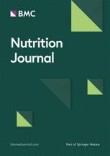Ramen restaurant prevalence is associated with stroke mortality in Japan

Among the types of restaurants examined, only the prevalence of ramen restaurants was positively correlated with age- and sex-adjusted stroke mortality rates. We acknowledge that we have not identified a direct relationship between ramen consumption and stroke mortality rates. Accurate analysis of individual diets was not possible because there is no public research database of specific kinds of food consumed. In addition, there are several types of orders offered in ramen restaurants (e.g., noodles, tsukemen) as well as instant noodles prepared at home. However, the prevalence of a specific type of restaurant is controlled by local demand and therefore provides some indication of regional food preferences. In addition, our results help to explain the relatively high stroke mortality in the northern Kanto and southern Kyushu regions of Japan. Ischemic stroke has a seasonal pattern in Japan, with ischemic stroke in winter associated with a poor prognosis [13]. Both low and high seasonal temperatures have been reported to increase the stroke mortality rate; however, the mechanisms underlying these trends are unclear [14]. Our findings suggest that diet preferences may explain regional differences in stroke mortality rates. Our study also revealed that both the prevalence of ramen restaurants and the stroke mortality rate are low in the Kinki region and in the southern Kanto region. We speculate that the factors influencing this result are as follows: 1) Restaurants with more extensive offerings than those of ramen restaurants are needed for business functions; 2) encouragement of a healthy diet is relatively common in urbanized cities such as Tokyo, Yokohama, Osaka, and Kyoto, which are located in these regions; and 3) historically, it was not necessary to preserve food using salt in these regions, which are located near the sea.
Relationships between diet and health have been reported previously. French and Italian cuisine is mainly consistent with the Mediterranean diet, which is generally considered a model of a healthy diet [15]. Most udon and soba restaurants serve both udon and soba. Rutin, a bioflavonoid found in soba, has been shown to have neuroprotective effects in some stress experiments [16], which suggests that soba has the potential to be part of a healthy diet. Fast food is high in unhealthy fats, salt, and sugar and contributes to obesity [17]. However, the prevalence of fast food restaurants was not a risk factor for stroke mortality in our study. We speculate that only a limited subgroup consumes fast food frequently in Japan.
It is important to emphasize that our study outcome was stroke mortality, not stroke morbidity. Hemorrhagic and cardioembolic strokes are subtypes with a poor prognosis [18, 19]. Certain characteristics of ramen (high temperature, high salt, and high carbohydrate content) may be of particular concern regarding hemorrhagic or cardioembolic stroke; however, data supporting this possibility are lacking.
Our study had several limitations. First, we did not directly assess whether ramen intake increases stroke risk. Consumption of ramen is not restricted to ramen restaurants. For example, we did not consider the impact of consumption of home-cooked instant ramen in our study. Second, there are many components of ramen, including soy, tonkotsu (a Japanese broth made from simmered pork marrow or pork bone), miso, and salt. The types or components of ramen that most strongly affect stroke risk remain unclear. Third, ramen restaurants do not serve only ramen; they also serve various side dishes such as dumplings and rice. These side dishes may include confounding nutritional factors. Finally, the mechanisms by which ramen intake increases stroke risk remain unclear.
from Hacker News https://ift.tt/38HO1Q7